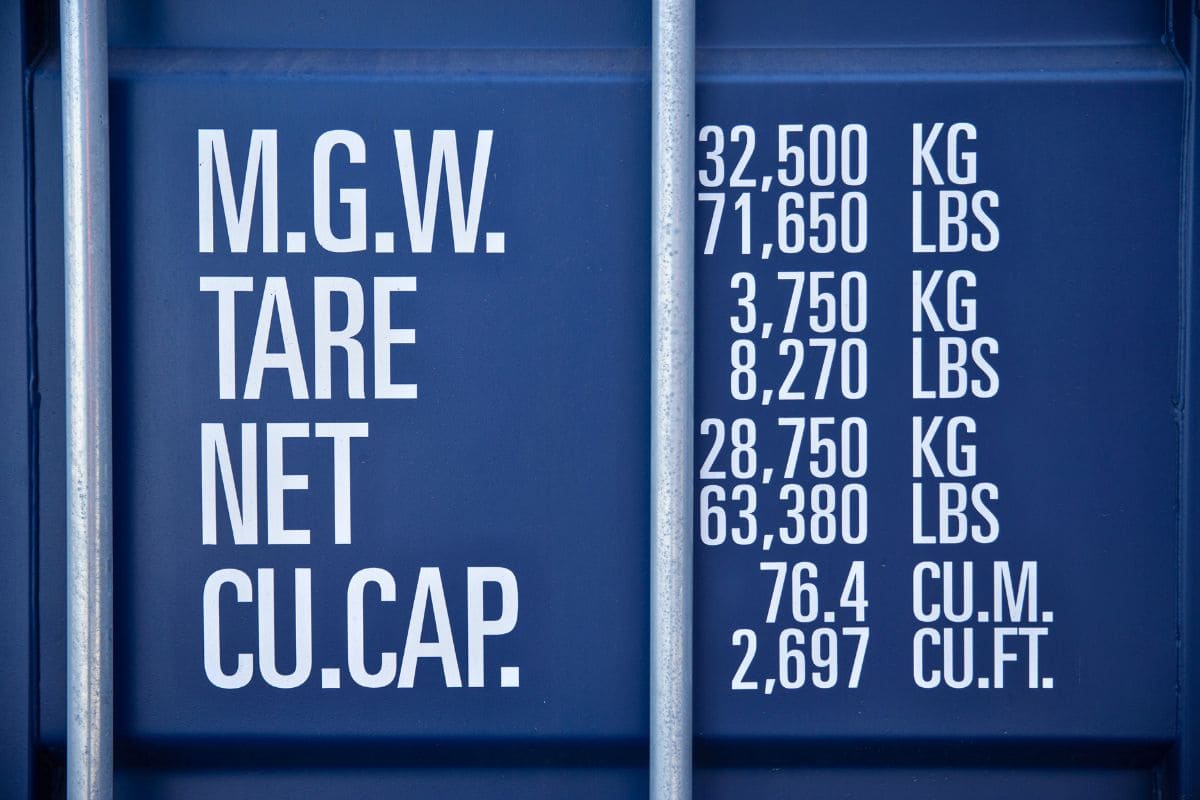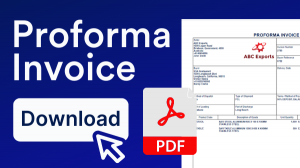Accurate weight management is important in shipping and logistics. Terms like Net Weight, Gross Weight, and Tare Weight are used to measure cargo. These terms are often confused and can lead to mistakes.
Weight affects safety, pricing, and transport limits. Incorrect declarations may overload vehicles, creating safety risks and breaking legal limits. This can lead to penalties or denied access at checkpoints, impacting operations and costs.
This article will explain the differences between Net Weight, Gross Weight, and Tare Weight. It will cover how these terms apply to shipping and influence pricing.
What Is Net Weight?
Net Weight (N.W.) is the weight of the product alone, without any packaging, containers, or additional materials used for storage or transport. It focuses entirely on the contents being shipped, excluding anything external. As Net Weight is the weight of the goods themselves, it includes solids, liquids, or gases. This measurement ensures that only the product itself is considered, providing clarity for both buyers and sellers.
Example Calculation
Consider a shipment of 2,000 bags of coffee beans. The coffee beans weigh 2 kg exactly without the packaging weight which is 0.01kg per bag. The Net Weight of the shipment would be:
Net Weight = Number of Units x Weight per Unit
2,000 x 2 kg = 4,000 kg beans
Net Weight is essential in industries like manufacturing and retail. It helps track raw materials accurately and ensures fair pricing by reflecting the true value of goods. Retailers use it to display the quantity consumers receive, without including weight of the packaging. In logistics, Net Weight plays a role in ensuring clear invoicing and maintaining transport weight limits to meet compliance requirements.
What Is Gross Weight?
Gross Weight is the total weight of the entire shipment. This includes the weight of the goods, all packaging materials, pallets, and the weight of the container itself used for transport. This measurement gives the complete weight of the cargo as it will be transported. It reflects how much space and weight the shipment takes up in trucks, ships, or planes, making it a key factor for pricing and safety.
Example Calculation
Imagine shipping 1,500 boxes of electronics, each with a Net Weight of 3 kg. The packaging for each box adds 0.5 kg. Ten boxes are packed together in cartons, and a pallet weighing 50 kg holds all the cartons. The Gross Weight would be:
Gross Weight = Net Weight + Packaging Weight + Pallet Weight + Container Weight
1,500 x (3 + 0.5) + 50 kg = 5,300 kg
Relevance to Compliance
Gross Weight plays a critical role in meeting transport regulations. Vehicles and vessels must adhere to strict weight limits to ensure safe operations. Trucking companies, for example, need accurate Gross Weight measurements to avoid fines or denied access at checkpoints. Overloading can cause accidents or damage infrastructure, leading to safety risks and penalties. In regulated industries, Gross Weight helps carriers comply with laws and ensure shipments move smoothly through checkpoints without delays.
Calculating the Difference Between Net Weight and Gross Weight: Example
Consider shipping 1,000 glass jars of honey. Each jar has a Net Weight of 1 kg of honey. Each jar’s packaging adds 0.2 kg, and the pallet holding the shipment weighs 100 kg.
Example Calculation
- Net Weight: 1,000 x 1 kg = 1,000 kg
- Gross Weight: 1,000 x (1 + 0.2) + 100 kg = 1,300 kg
What Is Tare Weight?
Tare Weight (T.W.) is the weight of an empty container or vehicle used for transporting goods. It refers to the unladen weight, meaning the container or vehicle without any products, pallets, or additional items inside. Knowing the Tare Weight helps carriers calculate the actual load by subtracting the product weight from the Gross Weight.
Example Calculation:
The formula for Tare Weight is:
Tare Weight = Gross Weight – Net Weight
where:
- Gross Weight is the combined weight of the container / vehicle / and its contents.
- Net Weight is the weight of just the contents (product).
For example, if the Gross Weight of a shipment is 3,500 kg and the products have a combined Net Weight of 2,800 kg:
Tare Weight = 3,500 kg – 2,800 kg = 700 kg
Why Tare Weight Varies
Tare Weight changes based on the type and size of the container. A 20-foot shipping container weighs around 2,200 kg when empty, while a 40-foot container can weigh 3,800 kg. The material used, such as steel or aluminum, also affects the Tare Weight. If a container undergoes repairs or modifications, the new Tare Weight must be updated on the container’s markings.
Knowing Tare Weight ensures accurate weight calculations and helps prevent overloading. It is essential for managing transport limits and meeting legal safety standards.
Importance of Weight Compliance and Safety

Managing weight correctly is important for safe and reliable shipping. It helps avoid delays, fines, and accidents. Staying within limits also keeps shipments moving without penalties.
Overloading Risks
Overloaded vehicles are harder to control and more likely to cause accidents. Heavy loads can also damage roads, leading to costly repairs. Trucks carrying too much weight may face travel restrictions or get stopped at checkpoints, causing delays and fines. Staying within legal limits reduces these risks and keeps shipments on schedule.
Regulatory Guidelines
Weight rules are in place to protect people and property. Trucks, ships, and planes must meet weight limits to avoid accidents. Customs inspections check that reported weights are accurate. Incorrect reports may lead to shipment holds, extra fees, or fines. Following these rules ensures that goods pass through borders without trouble.
Impact on Costs
Weight directly affects shipping costs. Freight rates are based on Gross Weight, so incorrect reports can change the final bill. Underreporting weight may result in extra fees, while overloading can cause fines. Accurate weight reporting helps prevent unexpected charges and delays. Staying within limits also makes operations more reliable and keeps shipments running smoothly.
National Motor Freight Classification (NMFC) Freight Class and Weight
Net Weight, Gross Weight, and Tare Weight all play a part in determining a shipment’s freight class under the NMFC system. The NMFC system sorts goods based on weight, density, and how they need to be handled. This classification affects shipping costs and ensures the cargo is transported safely and efficiently.
How a CBM Calculator Helps
A CBM (Cubic Meter) Calculator makes shipping easier by showing how much space your cargo will take up. It helps balance weight and volume, making sure containers are used efficiently without going over limits.
Using a CBM Calculator along with Net and Gross Weight ensures you don’t overload or waste space. It also helps with freight costs, as shipping companies often charge based on both weight and volume.
Plan smarter with our CBM Calculator and keep your shipments on track, saving time and avoiding extra costs.
How Weight Impacts Shipping Documents
Weight information is essential in shipping documents to meet compliance and avoid delays. Net Weight (N.W.) and Gross Weight (G.W.) are listed on key documents to help with customs inspections, pricing, and safety checks. Each document serves a specific purpose and helps track the weight of shipments accurately.
Packing List
A packing list includes both Net Weight and Gross Weight for every package or carton. This information helps customs officials verify the shipment and confirm that the declared goods match what is being transported. Proper weight reporting ensures the cargo clears inspections without issues.
Customs Declaration
Customs declarations require N.W. and G.W. to meet regulations. This ensures the declared value matches the shipment and helps calculate duties and taxes. Incorrect or missing weight details may cause shipment holds or fines.
Bill of Lading
The Bill of Lading must include the Gross Weight of the shipment. This ensures accurate transport planning and avoids overloading. Carriers rely on the Gross Weight to determine if the load complies with legal and safety limits. It is also required under the IMO’s Verified Gross Mass (VGM) guidelines, which help prevent accidents caused by overloaded containers.
When to Use Gross Weight vs. Net Weight
- Gross Weight: Used for international shipping, trucking, and safety compliance. It accounts for the total weight, including packaging and containers.
- Net Weight: Optional but useful when breaking down the product’s actual weight. It helps businesses track the value of goods and plan packaging efficiently.
Additional Weight Terms explained
What is DR Weight, and how is it different from Net Weight?
DR Weight refers to the weight of only the solid contents inside a package, excluding any liquid or gas. It is often used in industries dealing with food or chemicals. Net Weight, on the other hand, includes the entire contents of the product, regardless of the state—solid, liquid, or gas. For example, the DR Weight of a can of beans measures only the beans, while the Net Weight includes the beans and the liquid inside the can.
What is the difference between Kerb Weight and Tare Weight?
Kerb Weight is the weight of a vehicle with all necessary fluids and equipment but without passengers or cargo. It applies to cars, trucks, or other vehicles. Tare Weight refers specifically to the weight of an empty shipping container or vehicle used for transporting goods. Both terms describe unladen weight, but Kerb Weight applies to vehicles for regular use, while Tare Weight focuses on transport containers.
What is the difference between Gross Vehicle Weight (GVW) and Tare Weight?
Tare Weight measures the empty container or vehicle’s weight without cargo. GVW, includes the total weight of the vehicle, the cargo, passengers, fuel, and any other items loaded. GVW determines if a vehicle stays within legal weight limits, while Tare Weight helps calculate the exact cargo weight by subtracting it from the Gross Weight.
How is Hitch Weight different from Dry Weight?
Hitch Weight is the amount of weight a trailer places on the towing vehicle’s hitch. This helps determine if the vehicle can safely tow the trailer. Dry Weight is the trailer’s weight without fuel, water, cargo, or other loaded items. Understanding both weights is important to prevent overloading the towing vehicle and to ensure safe travel.







